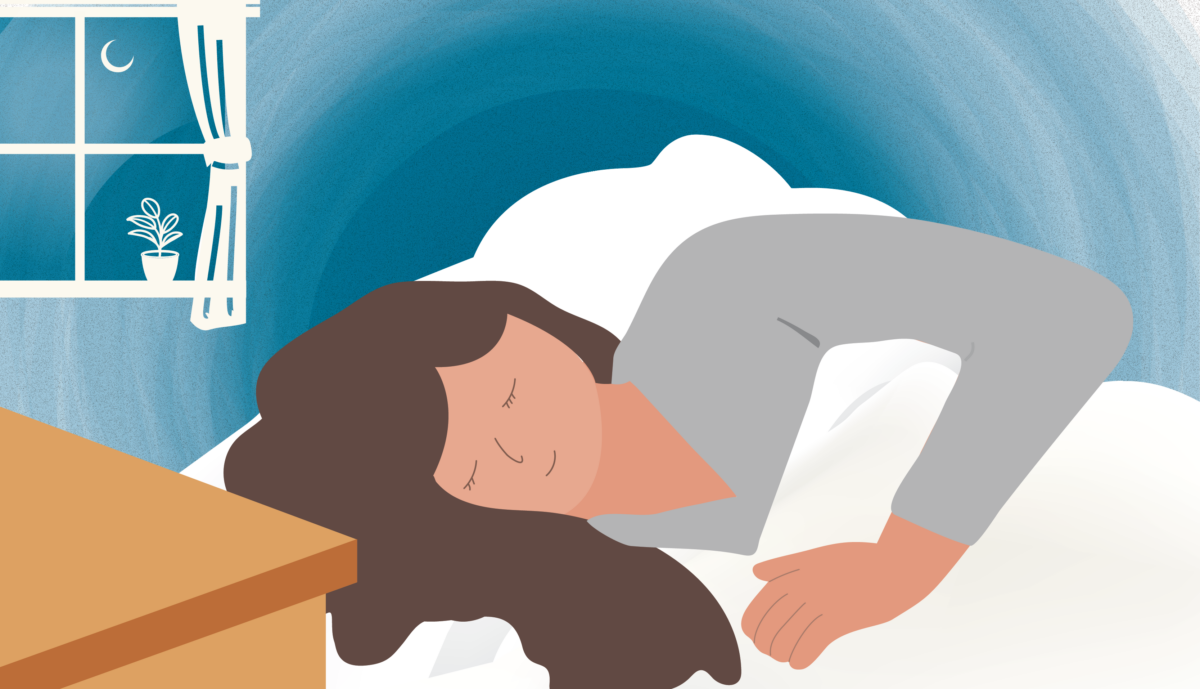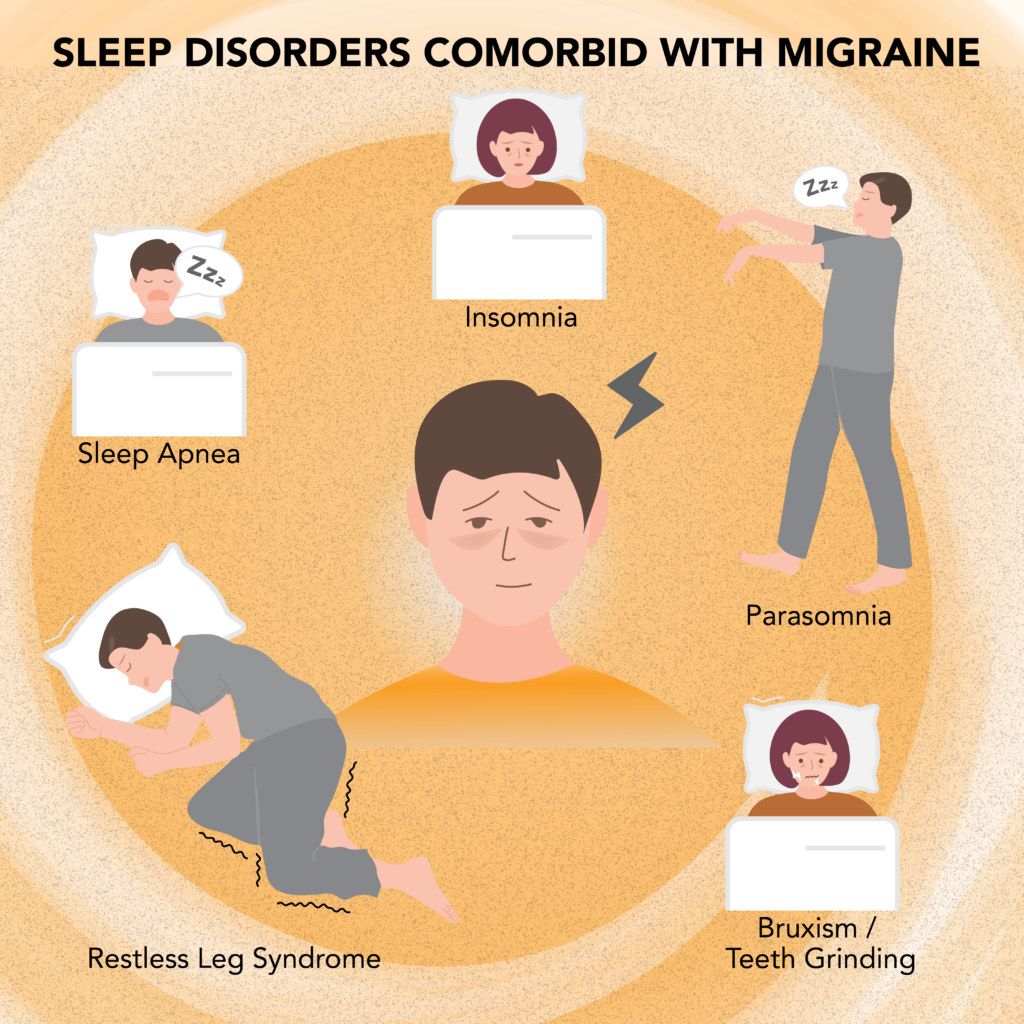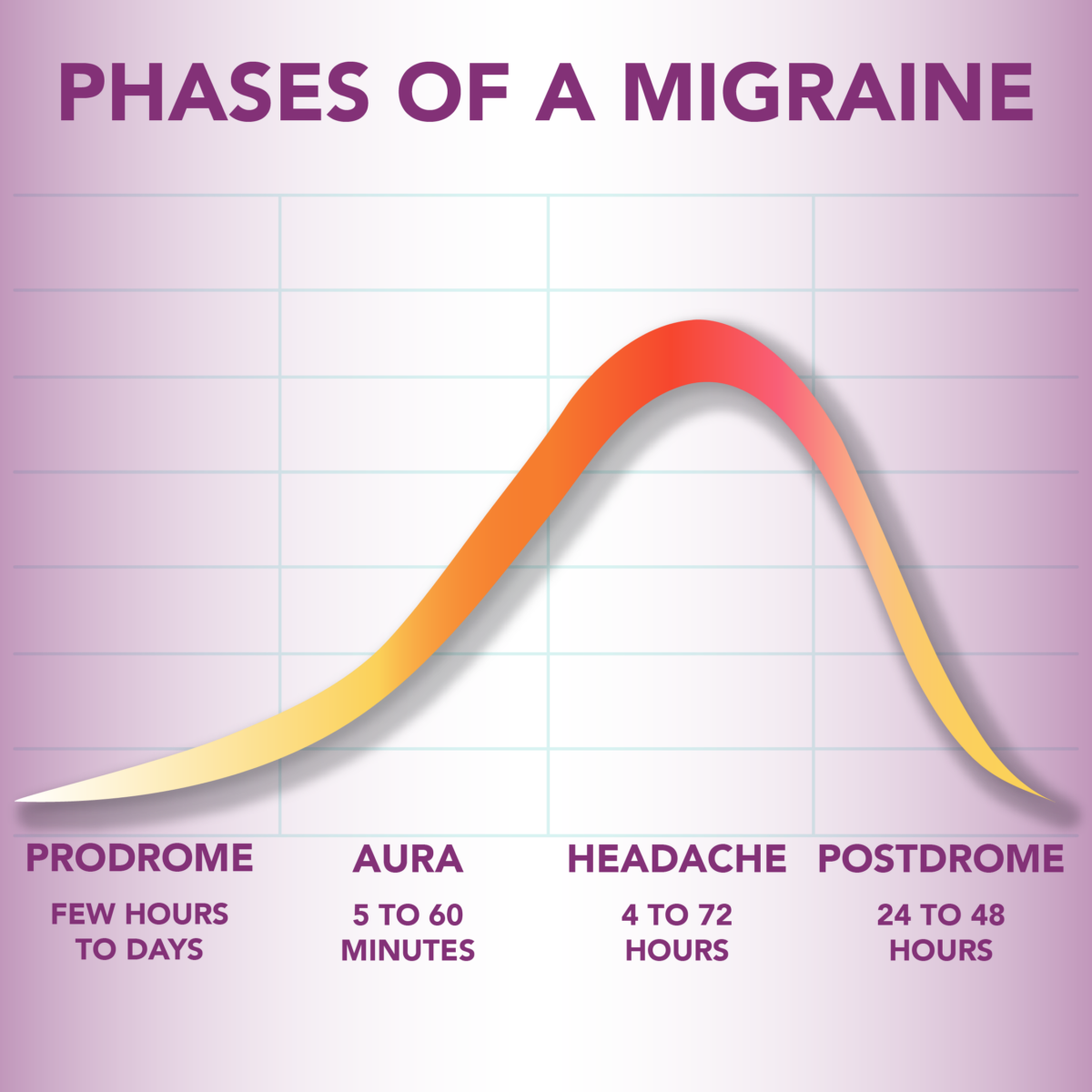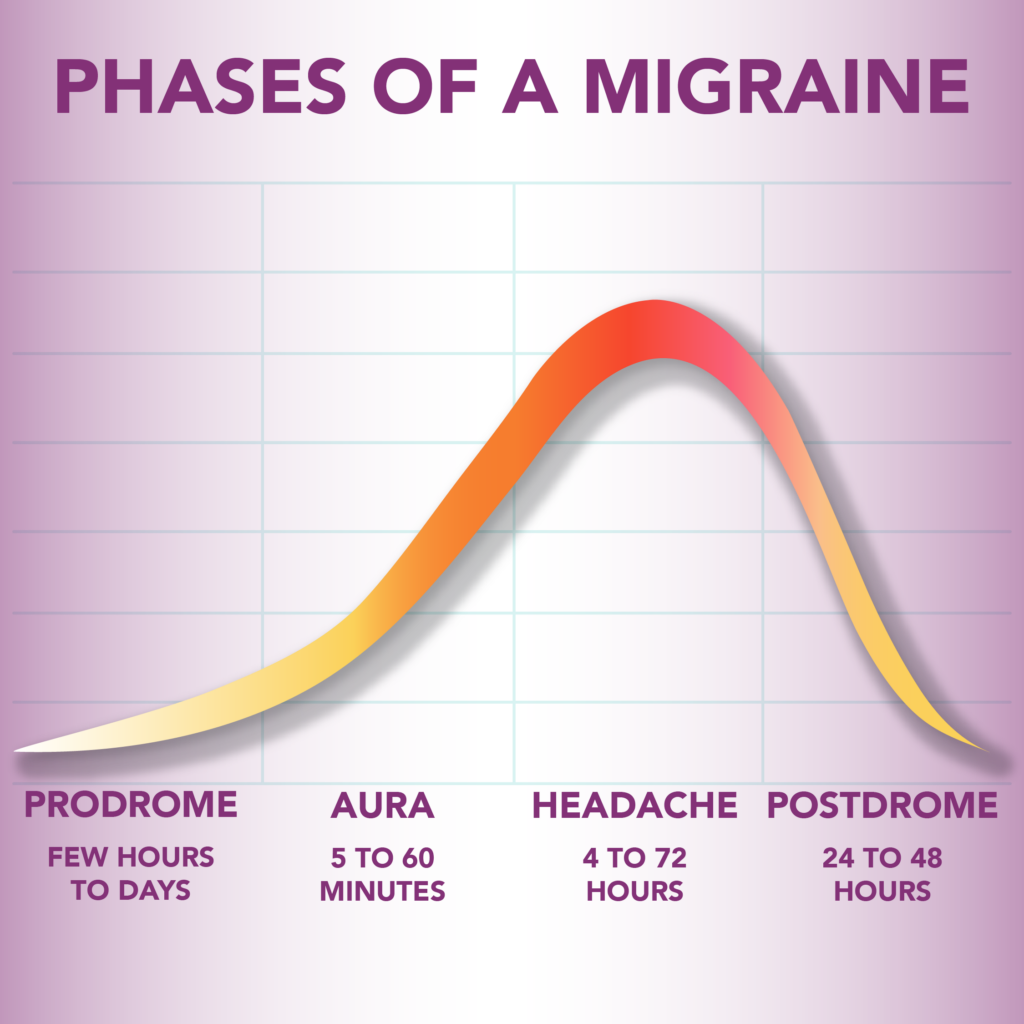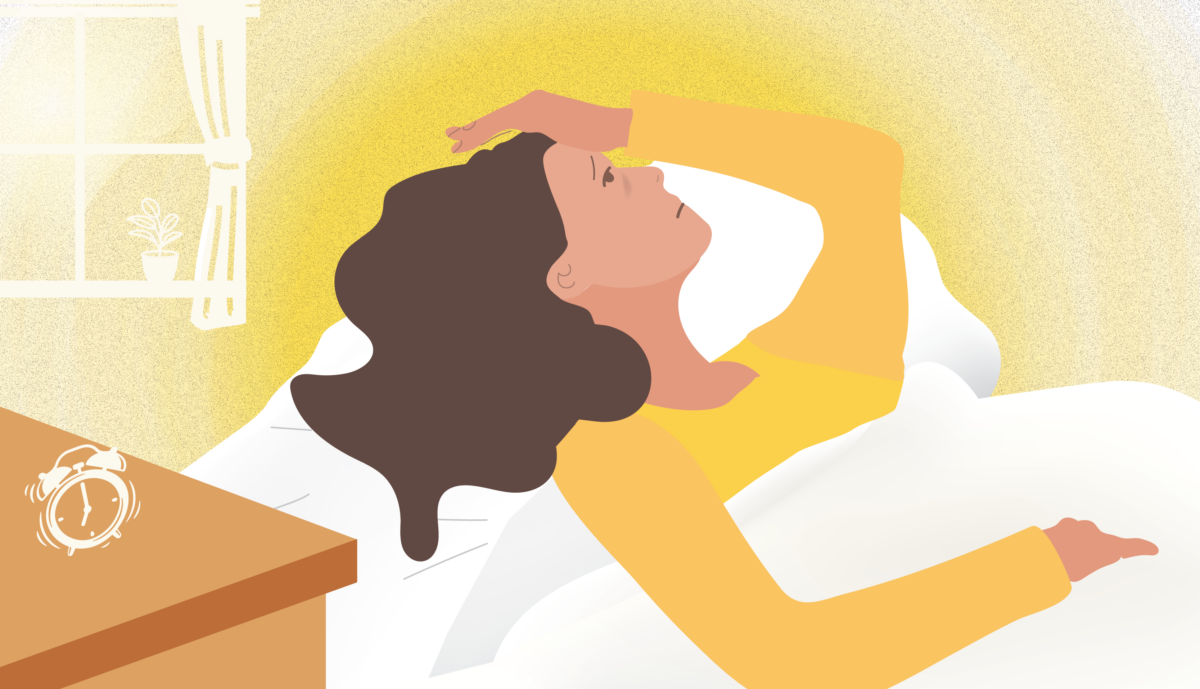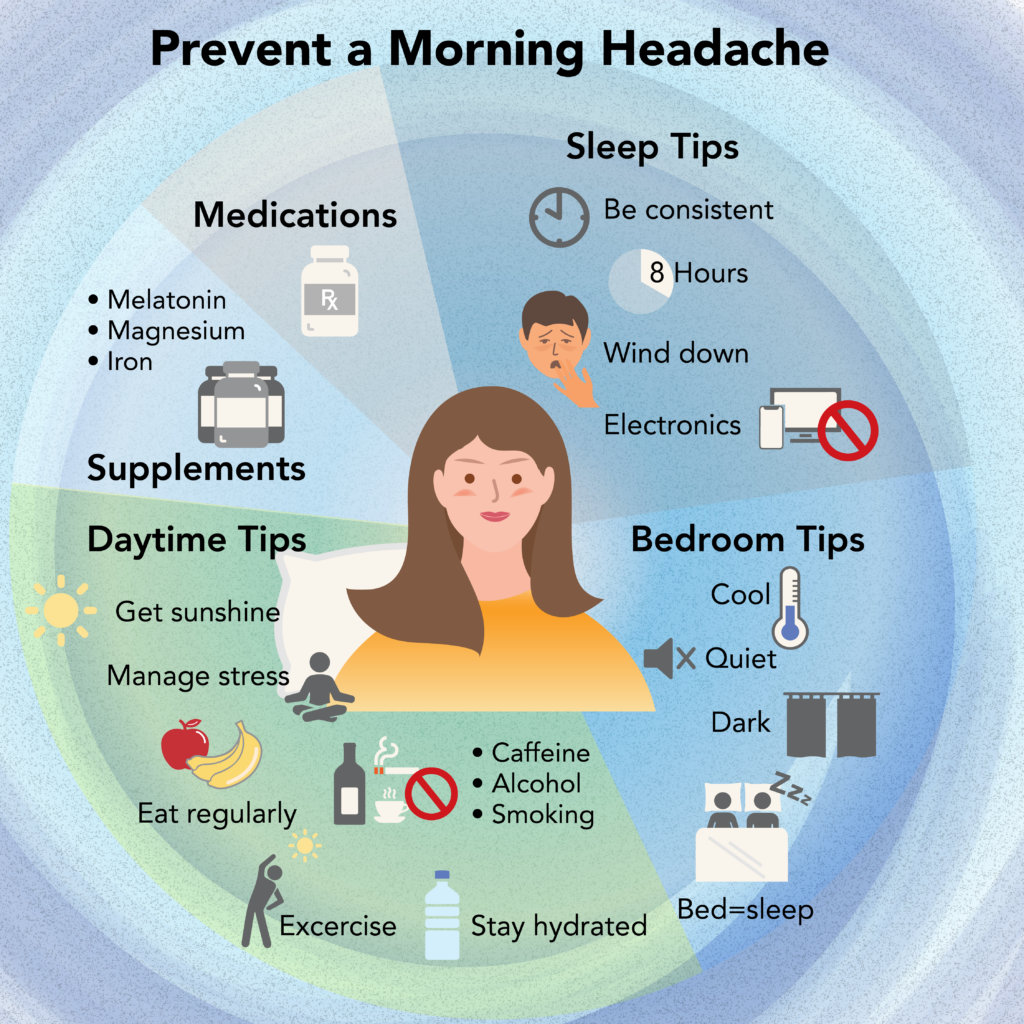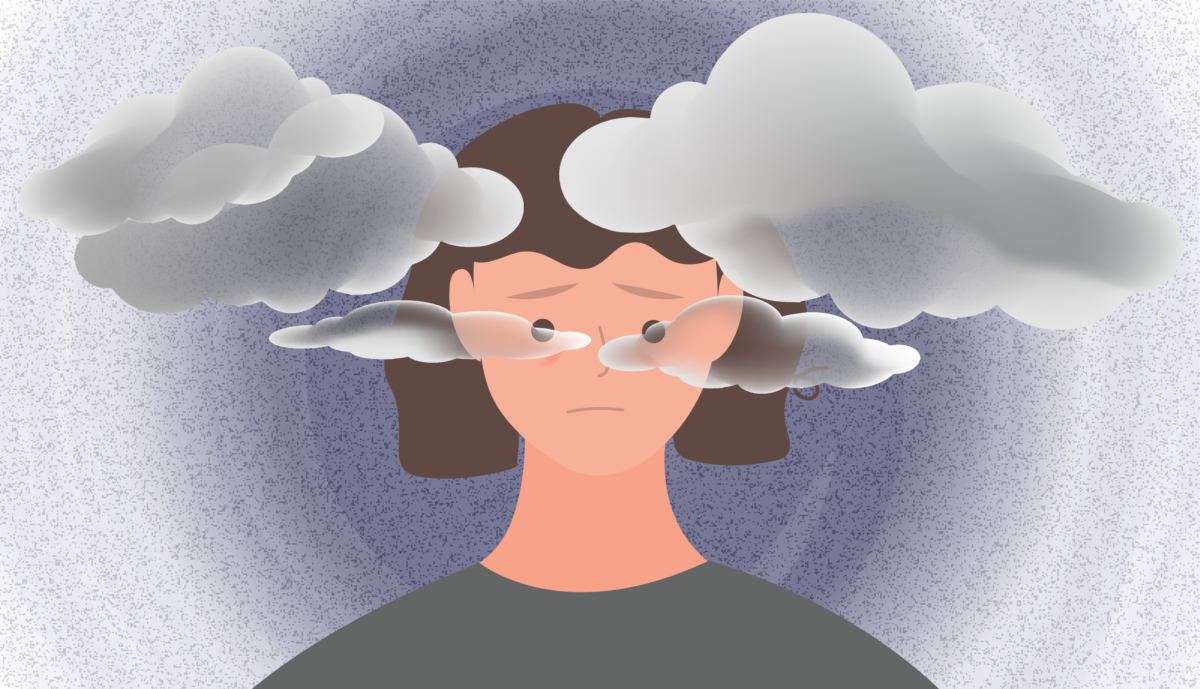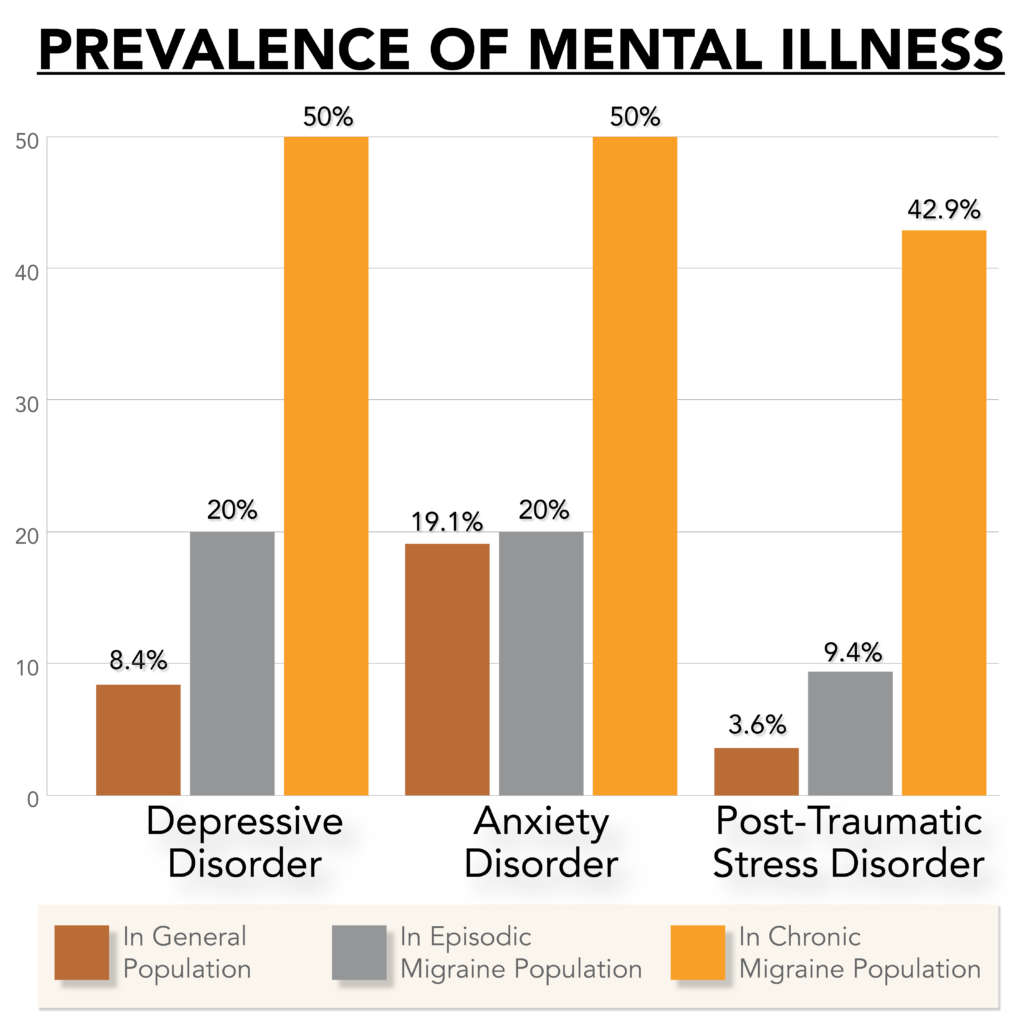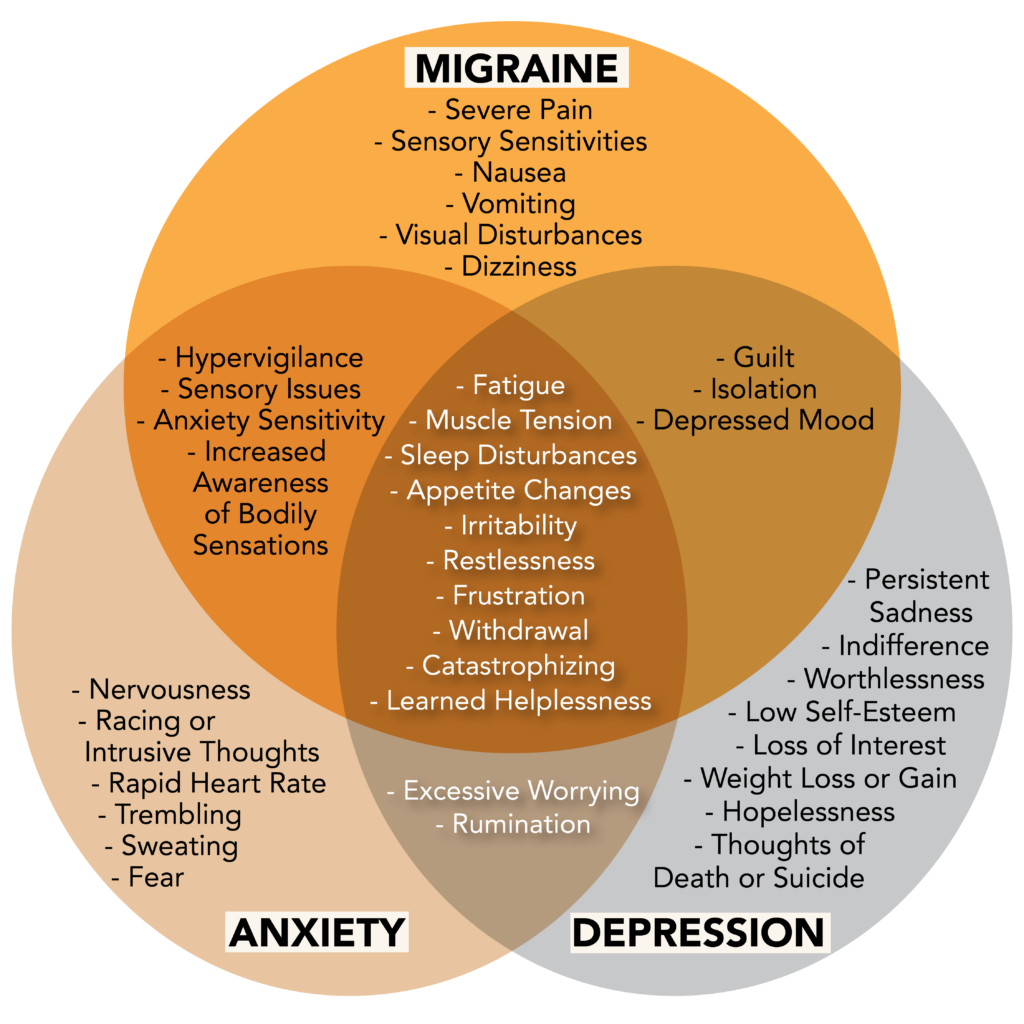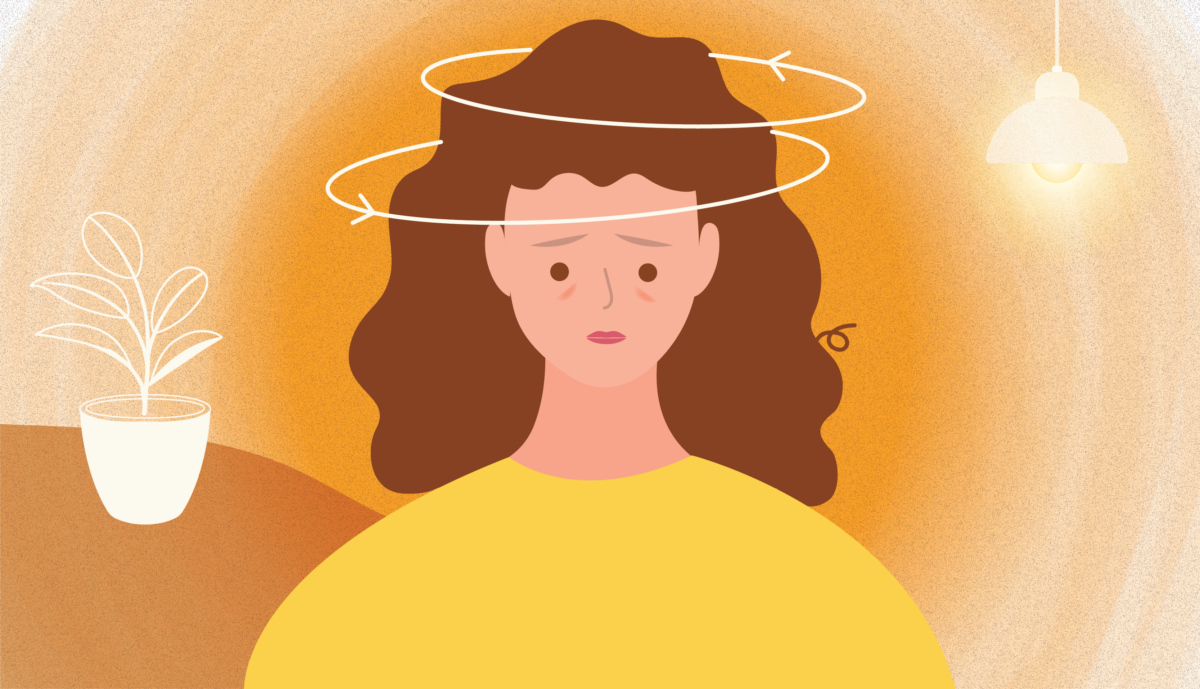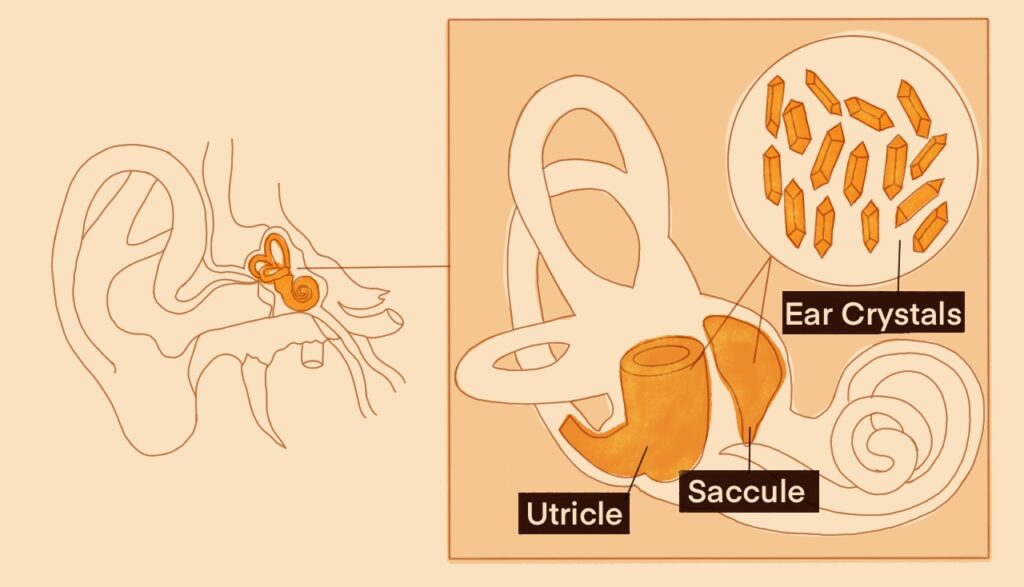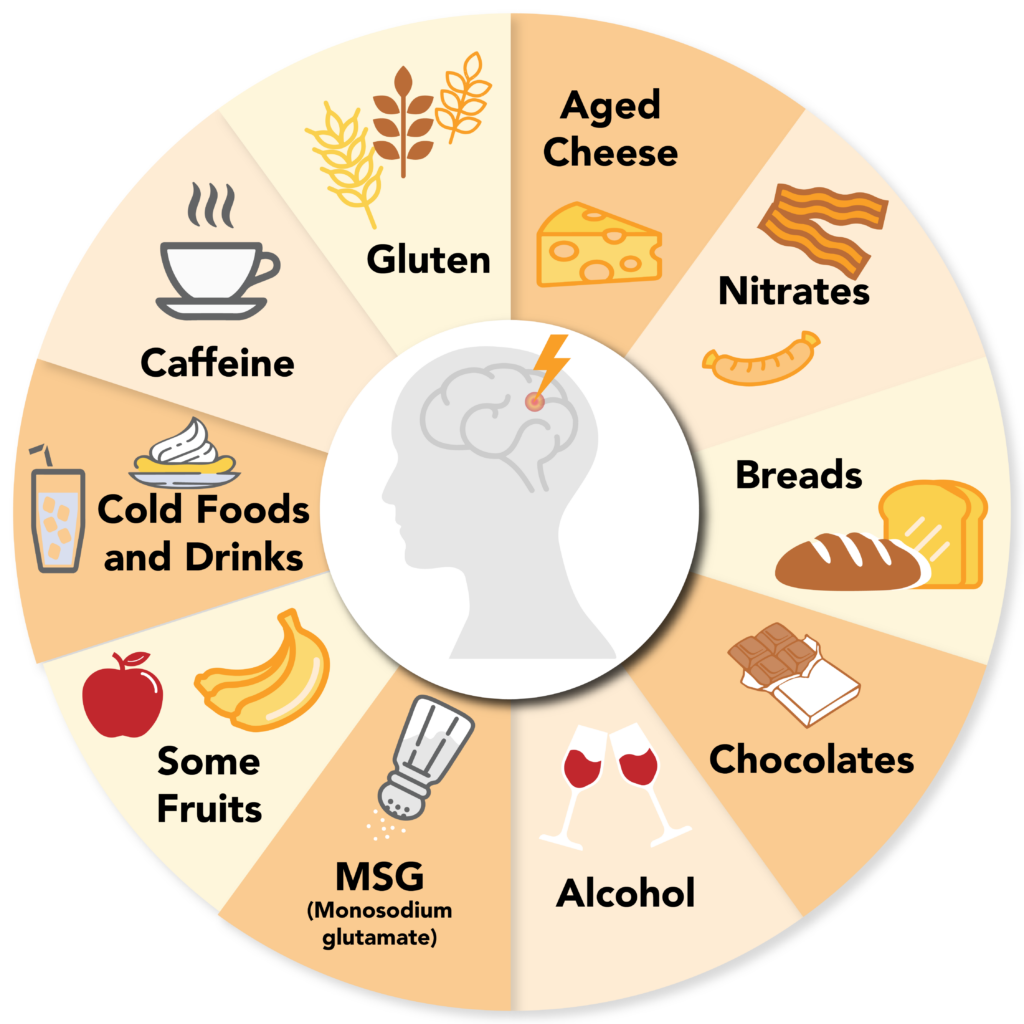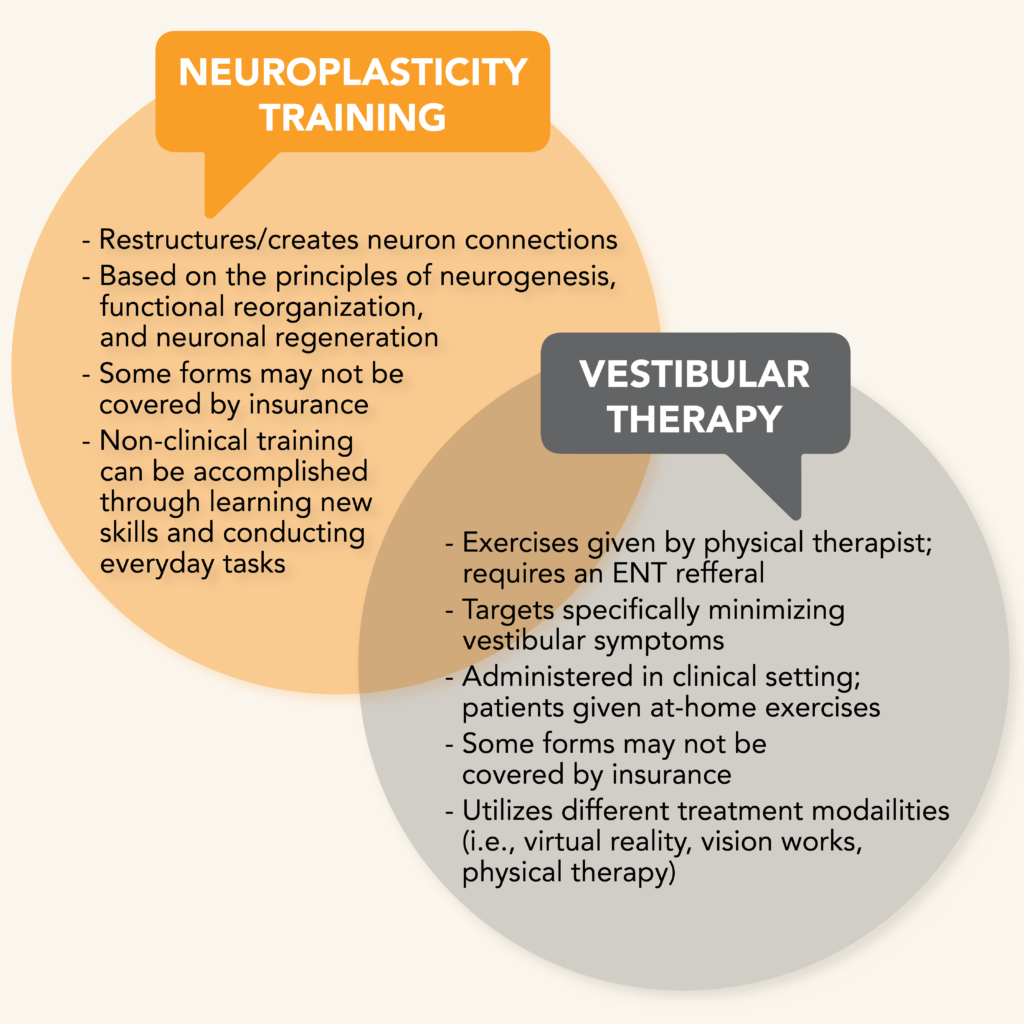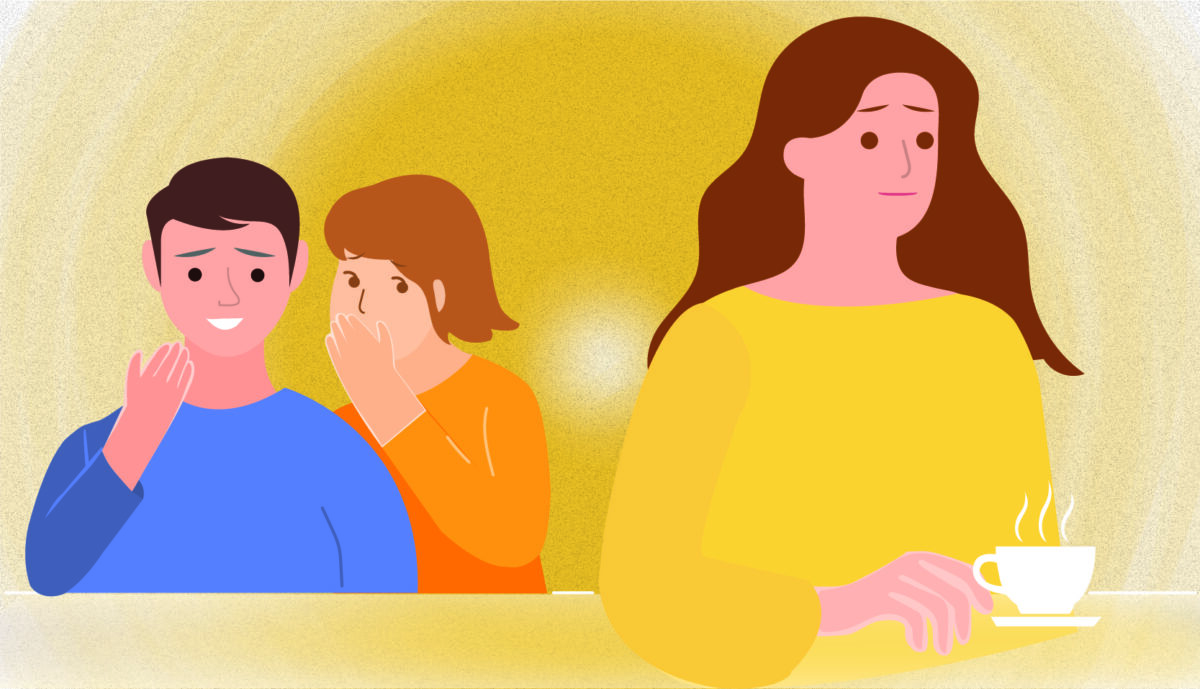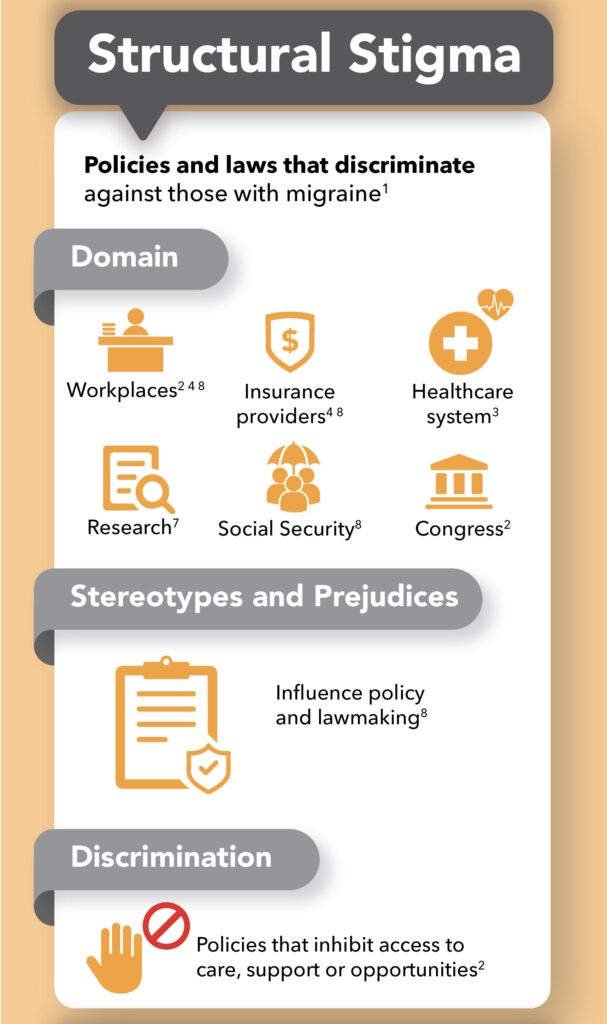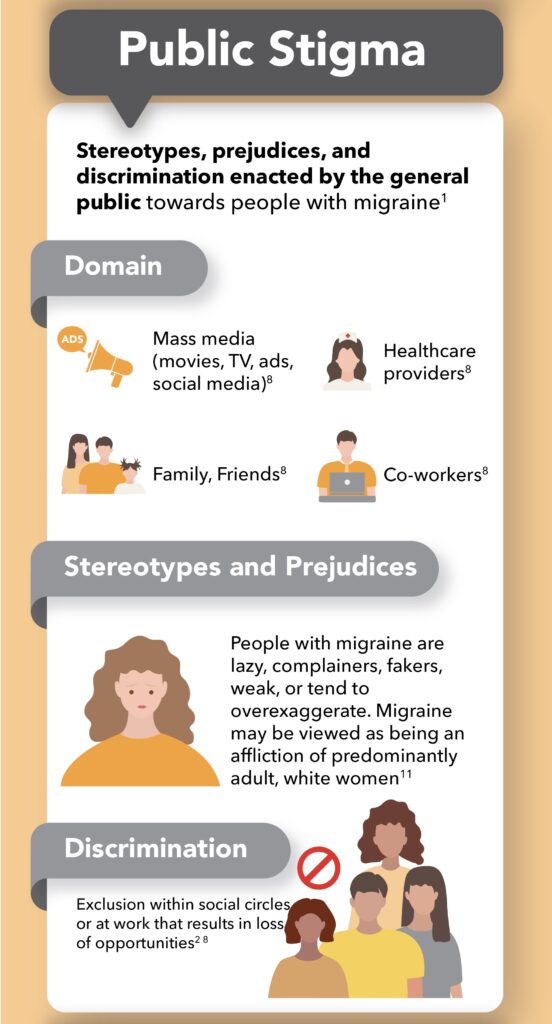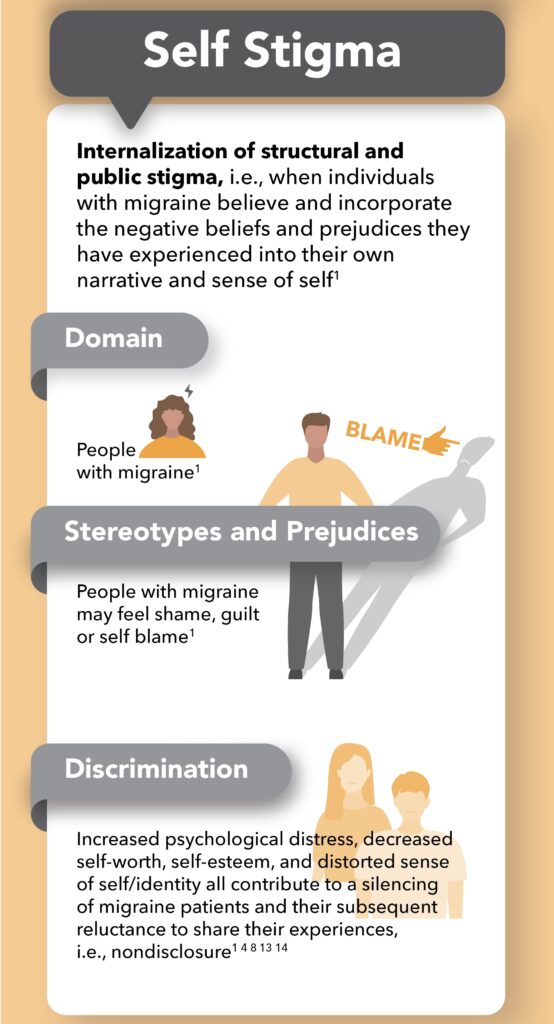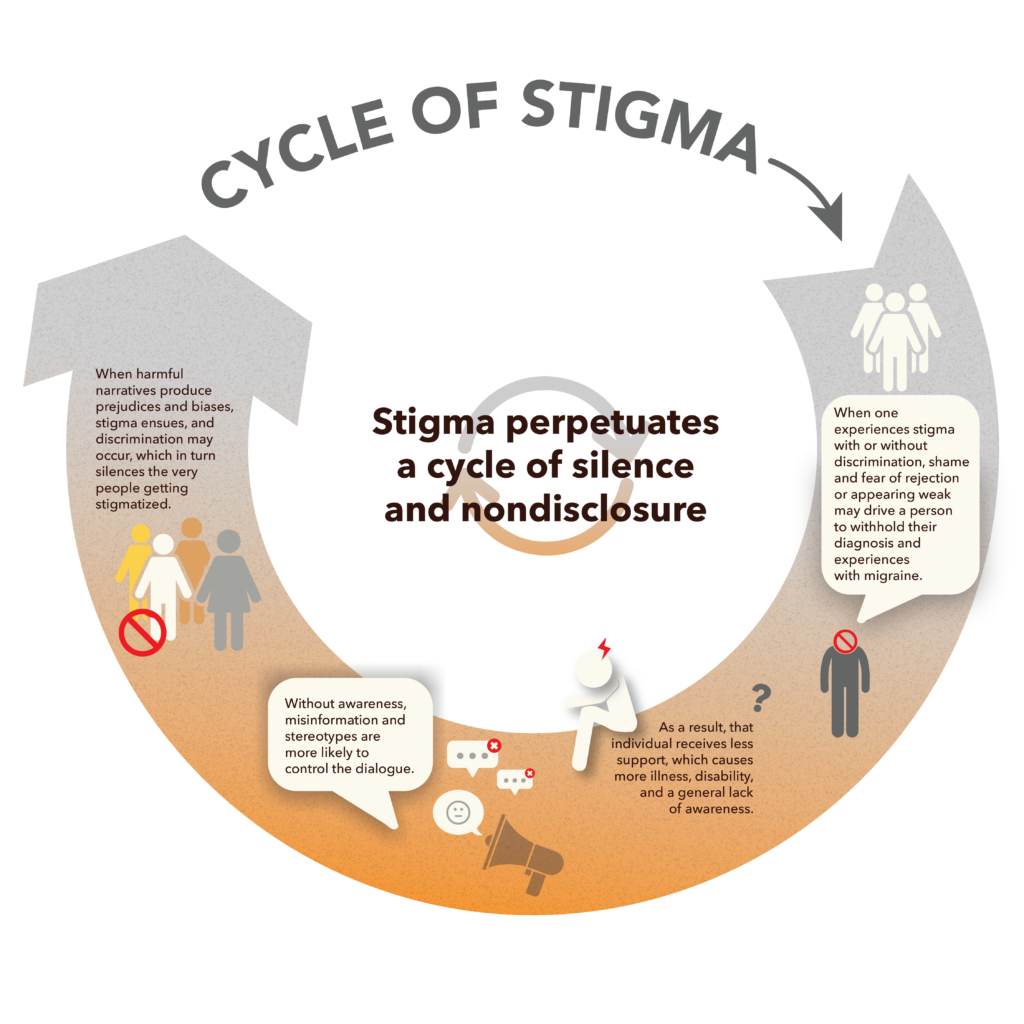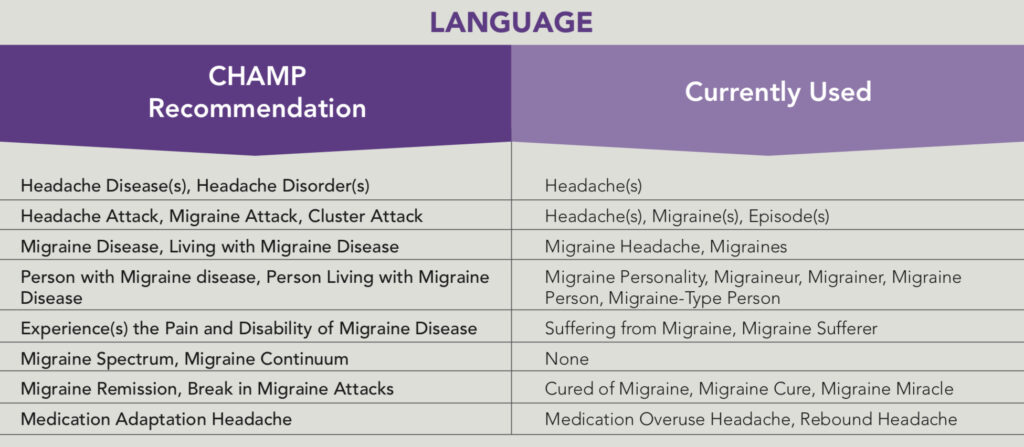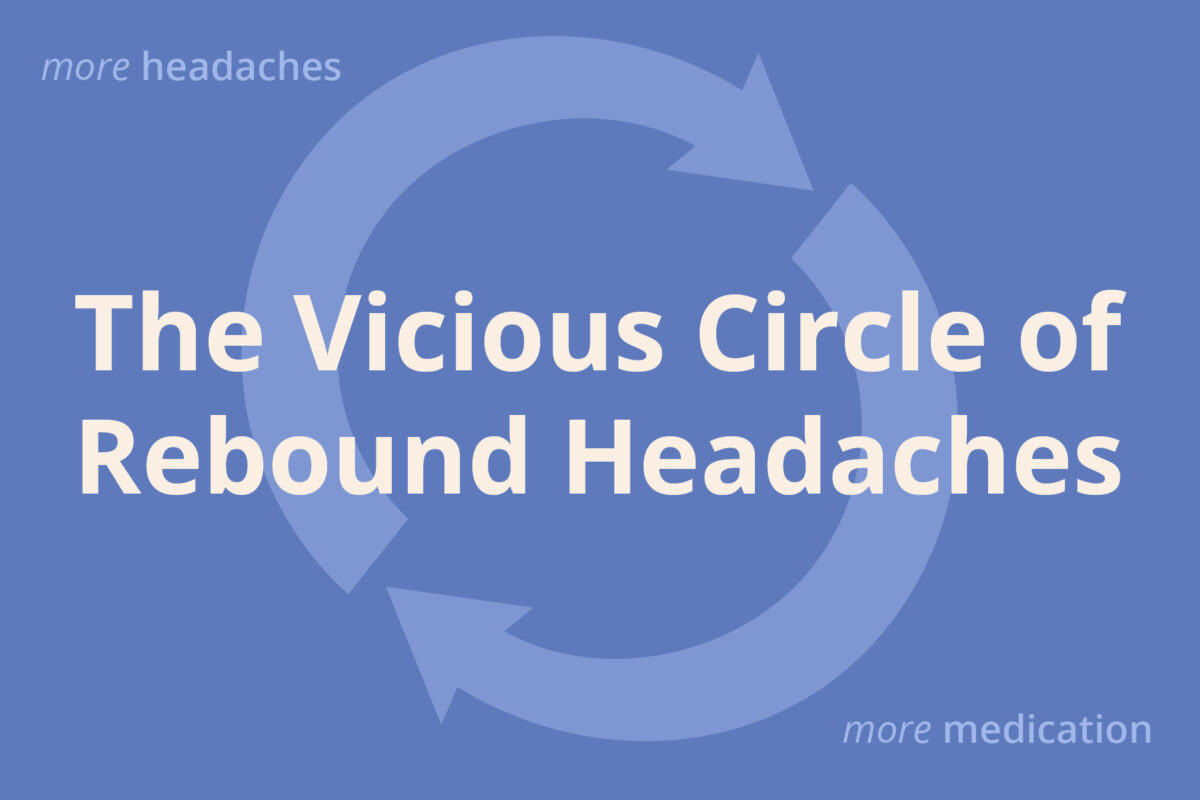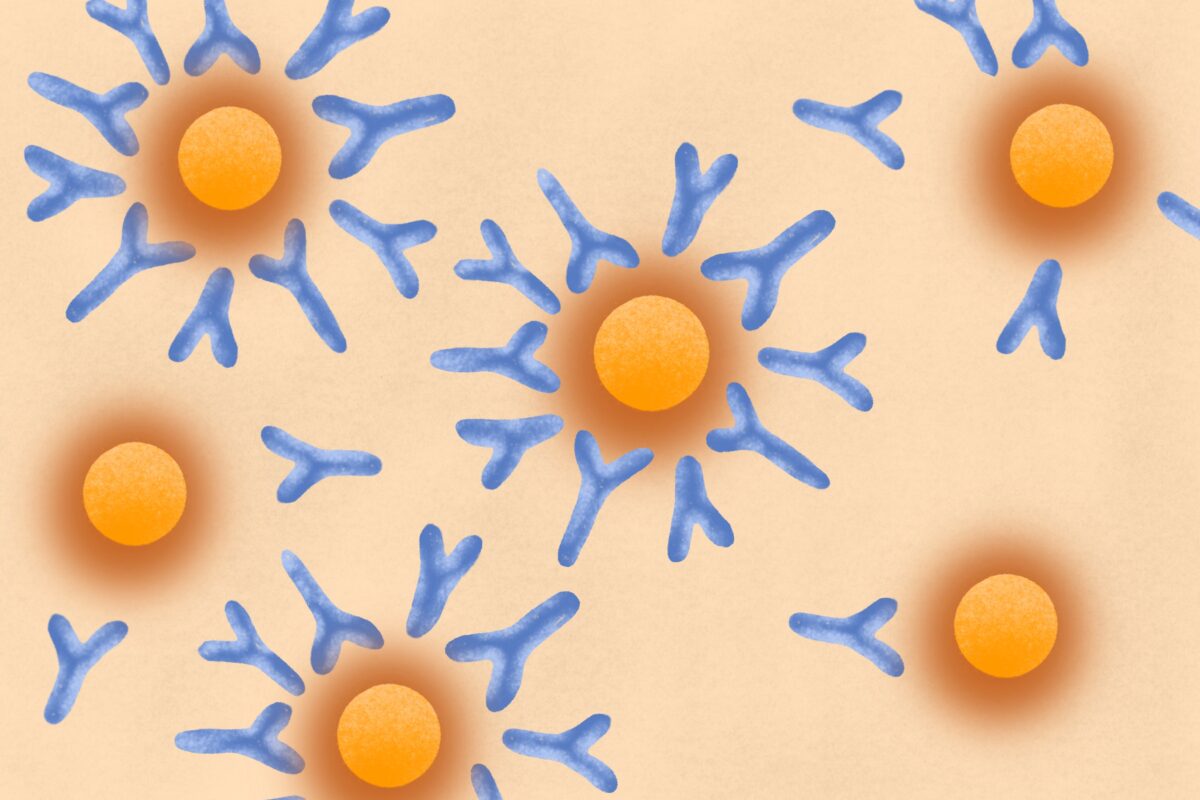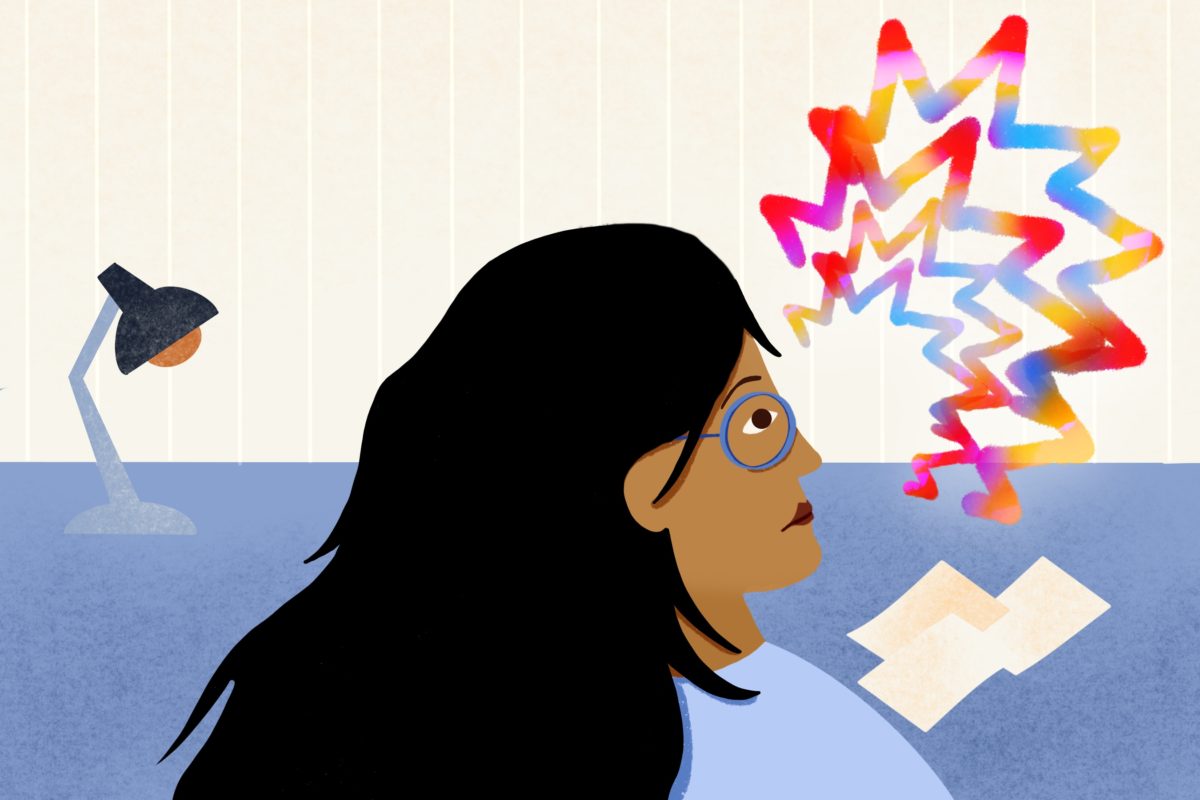Research has proven that migraine tends to pronounce itself in many different forms. However, its impact is felt throughout the body, with its severity and frequency of episodes depending on the patient’s triggers, environment, genetics, and treatment plan. But unlike other types of migraine, abdominal migraine or “stomach migraine” is considered an uncommon type of migraine.
How Did It Come to be Called a Migraine?
Abdominal migraine is a type of migraine, but it does not directly involve head pain. Instead of cranial inflammation being the epicenter of the attack, the gut is the epicenter of the attack. The differences don’t stop there- the attack commonly targets the gastrointestinal system, and there are no patterns of consistency.1 Even though it shares some triggers and body-wide side effects of a typical migraine, it is still largely misunderstood.
Symptoms of Abdominal Migraine
Abdominal migraine, given its name, has its root in the gastrointestinal tract. However, it has some overlap with chronic migraine. The most common symptoms associated with abdominal migraine are:
- nausea
- frequent bouts of vomiting
- loss of appetite
- pale skin
- moderate to severe abdominal pain centered around the naval (belly button)
The hallmark symptom of abdominal migraine is that attacks tend to occur with no warning and the abdominal pain severely impacts the patient’s way of life. In addition, symptoms rarely occur outside of the acute attack. Just like any type of migraine attack, the duration can range from several hours to a couple of days.3 Vomiting is more commonly seen in children than adults.
What Causes Abdominal Migraine?
The exact cause of abdominal migraine is unknown. Current research suggests that this type of migraine has to do with the gut-brain connection. Amy Gelfand, MD, Director of the Pediatric Headache Program and Pediatric Headache Specialist at UCSF, explains the connection in greater detail:
Abdominal migraine has similar triggers to other types of migraine, such as:
- food intolerances (e.g., processed foods, nitrates)
- motion sickness
- stress
- lack of sleep
- dehydration
Abdominal migraine, just like any other type of migraine, has been studied for its epidemiology: do genetics or environmental factors have more of a determining factor? Migraine is thought to be a more genetic disease, but it is important to consider how big of a role environmental factors play in the development of migraine, especially in children. It is possible for a patient to have a genetic predisposition to migraine, and then, depending on the prenatal and postnatal environment, certain environmental influences could determine how easy it is for the genes for migraine to activate and the rate of their frequencies.1
Diagnosis of Abdominal Migraine
Diagnosing abdominal migraine can be tricky. Abdominal migraine tends to overlap with other gastrointestinal disorders that affect children which can lead to a misdiagnosis in some cases.
Did you know?
Gastrointestinal disorders that affect children include:
- CVS (Cyclic Vomiting Syndrome)
- colic
- IBS (Irritable Bowel Syndrome)
- food intolerance
- acid reflux
- constipation
Research has identified two of these possible conditions that are linked to abdominal migraine: CVS and infant colic.
CVS (Cyclic Vomiting Syndrome)
CVS is characterized as a condition where the patient experiences cyclic, or periods, of extreme vomiting. The periods can range for as long as hours to days. CVS is often a disease that may be difficult to control. This condition is commonly mistaken for other functional gastrointestinal disorders such as acid reflux, irritable bowel syndrome (IBS), constipation, chronic stomach ache, and recurrent abdominal pain. This disorder doesn’t have an exact explanation but is believed to involve the subcortical brain structure, the hypothalamus, which is highly involved in this phenomenon of recurrent severe vomiting spells. The clinically observed explanation is patients with CVS report that vomiting spells tend to occur at night, which can result in poor sleep patterns1.
There are clear differences between abdominal migraine and CVS. While both tend to occur in children and produce periods of vomiting, abdominal migraine is more episodic with small periods of vomiting. Another difference is that the primary symptom of abdominal migraine is unexplained abdominal pain while for CVS is severe uncontrollable bouts of vomiting.
Current research has evaluated whether CVS in children is a precursor to abdominal migraine. Dr. Gelfand notes that it is possible for a child, diagnosed with CVS, to outgrow their symptoms and then develop migraine symptoms later.1 Dr. Gelfand notes that the likelihood of CVS progressing into migraine is about 50-66% likely.
Infant Colic
Infant colic is a gastrointestinal condition that affects young children aged. Dr. Gelfand characterizes colic as excessive crying from an otherwise healthy and properly nourished infant.3 Infants are commonly diagnosed around two weeks old and the diagnosis typically lasts until three months old. The common yardstick to diagnose colic is Wessel’s criteria. Given the variability of the amount of crying seen in colicky babies, the criteria states a diagnosis of colic involves excessive crying for at least three hours a day, for at least three days a week.3 It is noted that crying tends to occur more during the evening hours. Similar to abdominal migraine and CVS, the exact cause of colic has not yet been determined.
Researchers, however, have established a possible link between colic and migraine. The theory that surrounds this connection is similar to migraine, colicky infants are more likely to experience overstimulation with their environment. This overstimulation is especially true in infants who have a family history of migraine.3 To lessen the number of episodes of excessive crying, Dr. Gelfand recommends that parents handle the infant similar to how a migraine patient handles their migraine during an attack. This includes limiting the number of triggers in the infant’s environment3:
- turning down bright lights
- allowing a few visitors at a time with the infant
- making the room as quiet as possible
- not rocking the infant during an attack (due to motion sensitivity)
As complex as this type of migraine can be, it is not difficult to imagine the frustration that may be experienced when trying to get a proper diagnosis from the right specialist. Even though it is second nature to associate gastrointestinal issues with a gastroenterologist, it is beneficial for an individual who believes they have abdominal migraine to seek an opinion from both an gastroenterologist to rule out any other condition, and a neurologist, given migraine’s relationship to the gastrointestinal tract. While there is no specific diagnostic assessment for abdominal migraine, a physician will conduct the same examination and tests to rule out any other gastrointestinal conditions.
Who Gets Abdominal Migraine?
Previous clinical studies have observed the following prevalence of abdominal migraine:
- About 1-4% of school-aged children are diagnosed with this type of migraine.4
- Abdominal migraine is more common in girls than boys.5
- Christopher Oakley, MD, Neurologist at John Hopkins University observes that abdominal migraine is most often seen in children ranging from toddler age to early elementary.2 But a rising number of cases in adults are becoming evident.
- It is observed that childhood diagnosis of abdominal migraine is linked to an adult diagnosis of migraine headaches.6
Risk factors
Although there are no risk factors specific to abdominal migraine, there are links to anxiety and depression among patients. During severe spells of vomiting, the greatest risks to an abdominal migraine patient are malnutrition and dehydration. If such occurs, seek medical attention urgently.
Treatments for Abdominal Migraine
Similar to those who are afflicted with other types of migraine, there is a wide range of treatments available that target gastrointestinal symptoms and improve quality of life.
Given that this type of migraine is seen more in children, it is important for parents or caregivers to identify and understand ways that children, who are not old enough to verbalize their symptoms, express pain and discomfort.
Scott W. Powers, PhD, ABPP, FAHS, CCRF Endowed Chair & Professor of Pediatrics at Cincinnati Children’s Hospital/University of Cincinnati College of Medicine, notes that it is most beneficial for parents to watch their child’s actions before and during an attack; such behaviors might hold insight into symptoms, severity, and early coping mechanisms. Dr. Powers also recommends the following steps for parents to take to support a child diagnosed with abdominal migraine7:
- think of ways to keep them active
- be involved in daily activities
- seek out professionals who can give a clear diagnosis and clear treatment plan
- help them develop coping strategies not just during attacks but to their diagnosis
- provide a safe space for the child to express their feelings
Healthcare providers advise all migraine patients to establish an ACTION plan to manage and treat their migraine. The ACTION plan is broken down into five categories.
ACTION Plan
Shin Beh, MD, Founding Director of the Vestibular and Neuro-Visual Disorders Clinic at UT Southwestern, details what he calls his ACTION plan8:
Components of the ACTION plan
A (alternative therapies)
C (changes)
T (therapeutic options)
I (interictal symptom management)
O-N (planning to move “on”)
Step “A” (alternative therapies)
The first part of developing an ACTION plan is to consider alternative therapies (Step “A”). Alternative therapies include vitamins, herbs, nutraceuticals (a substance that is a food or a part of a food that has medical or health benefits), and exercises that are tailored to the individual.
Step “C” (changes)
Part two of the ACTION plan is to implement changes (Step “C”). This stage of the sequence involves two parts. It is necessary to identify triggers and avoid them in this step. The changes that take place can be little or big changes. Examples of this would be creating a diet that you can stick to or one that is specifically tailored to be anti-inflammatory and avoid food triggers. Another example is modifying one’s lifestyle to avoid known environmental triggers as much as possible. This step can be most challenging in the case of children who attend school.
Step “T” (therapeutic options)
Part three is to explore therapeutic options (Step “T”). This step involves finding preventive and acute medications that fit your symptoms and lifestyle. This step is the step with the most trial and error. This step could be the most frustrating part of the sequence that can span years. Even if a medication is effective, it can become less effective over time, which could lead to searching for a new option.
Step “I” (interictal symptom management)
Part four is specifically catered to treating/managing interictal symptoms (Step “I”). This step is the step that requires a dispelling of stereotypes around migraine. The ongoing challenge in managing migraine is a reminder that symptoms are truly more than the sum of their parts. It’s never “just a headache” or “constant belly pain.” Migraine attacks are much more complex than many realize. At this step, it is helpful for parents to help their children manage their self-esteem and coping mechanisms in the face of possible stigma from their classmates, teachers, coaches, etc. Learning to manage migraine symptoms is also the key to preventing other comorbidities (the presence of two or more diseases or medical conditions) that are more likely to occur with a migraine diagnosis, such as anxiety, depression, insomnia, sleep apnea, and motion sensitivity, also known as motion sickness.
Steps “O-N” (planning to move on)
The final part of the ACTION plan is a simple reminder to have faith that things will get better (Steps “O” and “N”). Now granted, that’s easier said than done. While it can seem migraine takes center stage in most people’s lives, it can be managed in a way that it takes occasional precedence. This part of the plan also encourages the need to make steps toward planning a life with migraine, rather than planning life around it. Migraine can be chronic, establishing an optimistic future for yourself (e.g., manageable goals, lifestyle changes, future aspirations) and a solid support system are necessary to navigate through life with migraine.
Cognitive Behavioral Therapy (CBT)
Cognitive Behavioral Therapy, or CBT, has been an effective therapeutic approach that has been utilized across a breadth of subjects in mental, physical, and emotional health. CBT combines both a cognitive and behavioral focus to develop healthy self-esteem, behaviors, personal coping skills, problem-solving, and regulation of emotions in the face of personal adversity.
Previous studies have cited a link between abdominal migraine and anxiety.5 CBT can be an effective therapy to use to reduce stress and treat migraine when used simultaneously with drug modalities.
Drug Therapies
Treatment Options for Adults vs Children
Some treatment options are more suited for adults than children. Fortunately, there are a multitude of drugs to combat gastrointestinal symptoms for both groups. Similar to chronic migraine and other types of gastrointestinal disorders, abdominal migraine may be treated with both preventive and rescue medications.
The typical course of treatment for abdominal migraine follows the same trajectory as classic migraine and other chronic gastrointestinal disorders by utilizing various drug modalities. Current treatment options include:
- supplements
- tricyclic antidepressants
- serotonin inhibitors
- dopamine inhibitors
- neurokinin-1 receptor inhibitors
- triptans
- propranolol (Inderal)
- topiramate (Topamax)
- over-the-counter anti-nausea medications
- over-the-counter anti-inflammatories (NSAIDs)
Dr. Gelfand recommends having a go-to first-line treatment, and having at least one rescue option — in case the first-line doesn’t get the job done. She also recommends making the first-line treatment an oral one, and your rescue should utilize another route so the treatment gets into your system to help stop the attack in the event of severe vomiting.1
Supplements, such as coenzyme Q10, L-carnitine, and riboflavin, can be helpful for both children and adults. The theory surrounding these supplements’ properties is that they help with the mitochondria.1 They are generally well tolerated and have very few side effects. The L-carnitine, however, can leave a fishy aftertaste.
Tricyclic antidepressants, such as, amitriptyline (Elavil), are used to decrease the frequency of migraine attacks as a preventive option. This branch of antidepressants works to increase the amounts of the neurotransmitters serotonin and norepinephrine. Common possible side effects can be exhibited as dry mouth and constipation. Dr. Gelfand recommends that while a patient is taking tricyclics that their doctor is routinely checking their heart rhythm to ensure that there’s not a lengthening of a part of the heart rhythm called the QT interval.1 The side effect comes in the form of an abnormal heartbeat in mild cases.
Whilst increasing norepinephrine and serotonin is helpful in increasing blood flow to constricted-prone blood vessels in the brain, increasing the amount of serotonin in the body can also be a double edged sword, especially for abdominal migraine patients.1 So it is a helpful to consider serotonin inhibitors including ondansetron (Zofran ODT) and granisetron (Kytril) which work to prevent nausea and vomiting by blocking serotonin molecules. Headache and dizziness are usually the main side effects with these types of drugs.
Dopamine inhibitors, including prochlorperazine (Stemetil, Buccastem) and chlorpromazine (Thorazine), work to block increases of dopamine, which results in vomiting and nausea.1 Migraine and dopamine have a complex relationship: low levels can cause system-wide hypersensitivity to sensory stimuli that migraine patients know all too well. But at high levels, dopamine can cause excess nausea and vomiting spells.9
Drugs that work on the neurokinin-1 receptors, such as aprepitant (Emend), work in conjunction with other medications, like ondansetron (Zofran ODT), to inhibit nausea and vomiting. Aprepitant works in the area of the brain on receptors involved in vomiting.3 Originally, the drug was intended for chemotherapy-induced nausea and vomiting, but over the years has been used outside this medical situation due to its lasting effects, and can be used as both preventive and acute treatment.1 Aprepitant is generally well tolerated, though it has been observed that patients can exhibit hiccups as a side effect and getting this medication covered by insurance can be difficult due to its status as a novel drug.1
Triptans, such as sumatriptan and zolmitriptan, are popular alternatives for those who have trouble keeping oral medications down due to severe vomiting spells. Triptans, another form of serotonin receptor inhibitors, work to decrease swollen blood vessels. They come in the form of an oral pill, and are available as a nasal spray. Nasal spray options such as these work by getting absorbed across the lining of the mucosa of the nose, where there are a lot of blood vessels. Nasal spray absorption in the bloodstream can therefore be very rapid are faster than oral drug formats.1 Sumaptriptan is also available as a subcutaneous injection, which is very effective for the same reason as nasal spray options. Both zolmitriptan and sumatriptan are used as rescue medications.3
Propranolol (Inderal) is a drug that belongs to the treatment class of beta blockers and is used as a preventive in the treatment of migraine. Beta blockers, such as this one, are commonly used as a blood pressure medication that relaxes the blood vessels, which is very useful for migraine patients.
Topiramate (Topamax) is a common anticonvulsant (seizure) drug that can be used in the prevention of migraine. More specifically, most physicians recommend topiramate as a prevention of abdominal migraine due to a number of patients showing a decrease in symptoms.
Though the most commonly used over-the-counter anti-nausea medications include Pepto Bismol, Dramamine, and Tums, antihistamines have been cited as a possible remedy for nausea. They work the same way drugs like Dramamine combat motion sickness. Some over-the-counter medications and prescription anti-nausea medications can be utilized as suppositories.
Over-the-counter anti-inflammatory medications (NSAIDs), like ibuprofen, are common drugs that people use for migraine attacks. But in the case of abdominal migraine patients, they’d be reaching for these medications for their severe belly pain. However, a study has shown that when children in an emergency room setting were randomly assigned to receive either an NSAID medicine, like ibuprofen or ketorolac, or one of the dopamine-acting agents, such as prochlorperazine, those who received prochlorperazine reported higher satisfaction and were more likely to improve over a certain period of time than those who received the NSAID medicine.1
Natural remedies
Even though it seems counterintuitive that certain smells could bring relief to a individual whose sensitivity to smells can cause bouts of nausea and vomiting, it has been cited that certain aromas can make a slight difference. Dr. Gelfand mentions a study conducted in an emergency department setting. Adults with nausea were given different treatments to combat the nausea like ondansetron and smelling alcohol swabs. It was found that breathing in the alcohol swabs smell was actually quite helpful for people’s nausea.1 It has also been cited that the smell of peppermint and lavender oil have provided relief to migraine and nausea patients as well.
A remedy that has been scrutinized for the treatment of nausea is cannabis. Many people have noted cannabis’ effect on nausea and appetite. However, nausea/vomiting prone individuals are primed for a condition known as cannabinoid hyperemesis syndrome. This effect is especially true for individuals who had cyclic vomiting syndrome or people who use cannabis frequently. Cannabinoid hyperemesis syndrome produces symptoms similar to cyclic vomiting syndrome — episodes of very extreme vomiting — in people who have been exposed to cannabis frequently over time. Dr. Gelfand suggests topical CBD as a good cannabis-based therapy option.1
The most common natural remedies resorted to for managing gastrointestinal symptoms are ginger chews/drops, refraining from drinking any beverage too quickly, eating smaller meals, keeping hydrated, and following the BLAND diet which is commonly recommended for patients who have severe vomiting and diarrhea. It involves eating bland foods and drinks such as toast, bananas, rice, Jello, and non-spicy foods.1
TENS/Acupuncture
Acupuncture has been cited as another natural remedy to combat abdominal symptoms. Common examples of over-the-counter acupuncture devices are Sea-Bands and TENS units, which affix to a person’s wrist to divert the pain signals away from the brain. These devices are particularly useful as drug-free alternatives to prescription or over-the-counter anti-nausea medications. This non-medicated method is especially valuable for patients still physically developing such as children and adolescents.1
Outlook/prognosis
Life with a chronic disease such as abdominal migraine can be an emotional and physical challenge. The field of migraine research, however, is an ever-changing landscape with advancements being made every year. Abdominal migraine is being studied more now than ever before. It’s not easy to remain hopeful when trying to minimize gastrointestinal symptoms but this is truly a time for hope.
It is important to utilize the resources that are currently available to you while a permanent solution to abdominal migraine is still being developed. Having abdominal migraine is not a “life minimizing” or “end of life” sentence; although it may feel overwhelming at times of during unrelenting bouts of stomach pain, nausea and vomiting. As long as one takes steps to effectively manage their migraine condition, rally support from loved ones, and educate themselves and those around them, having a good quality of life with abdominal migraine is very possible.
Additional Resources
- Cyclic Vomiting Syndrome Association: https://www.cvsaonline.org/for-patients/new-patients/
- Migraine Community Groups: https://www.milesformigraine.org/migraine-community-groups/
- Move Against Migraine (Facebook): https://www.facebook.com/groups/MoveAgainstMigraine/
- The Daily Migraine (Facebook): https://www.facebook.com/groups/TheDailyMigraine/
- Headache Impact Test: http://www.headaches.org/headache-tests/
- Migraine Disability Assessment Questionnaire (MIDAS): https://migraine.com/wp-content/uploads/2012/04/midas.pdf
- Coalition for Headache And Migraine Patients [CHAMP] (USA): https://headachemigraine.org/
- American Migraine Foundation (USA): https://americanmigrainefoundation.org/
- Association of Migraine Disorders (USA): https://migrainedisorders.org/
- National Headache Foundation (USA): https://www.headaches.org/
- Patient Advocate Foundation (USA): http://www.patientadvocate.org/
- Work Accommodations for Migraine: https://www.mymigraineteam.com/resources/disability-benefits-for-migraine-what-you-need-to-know

